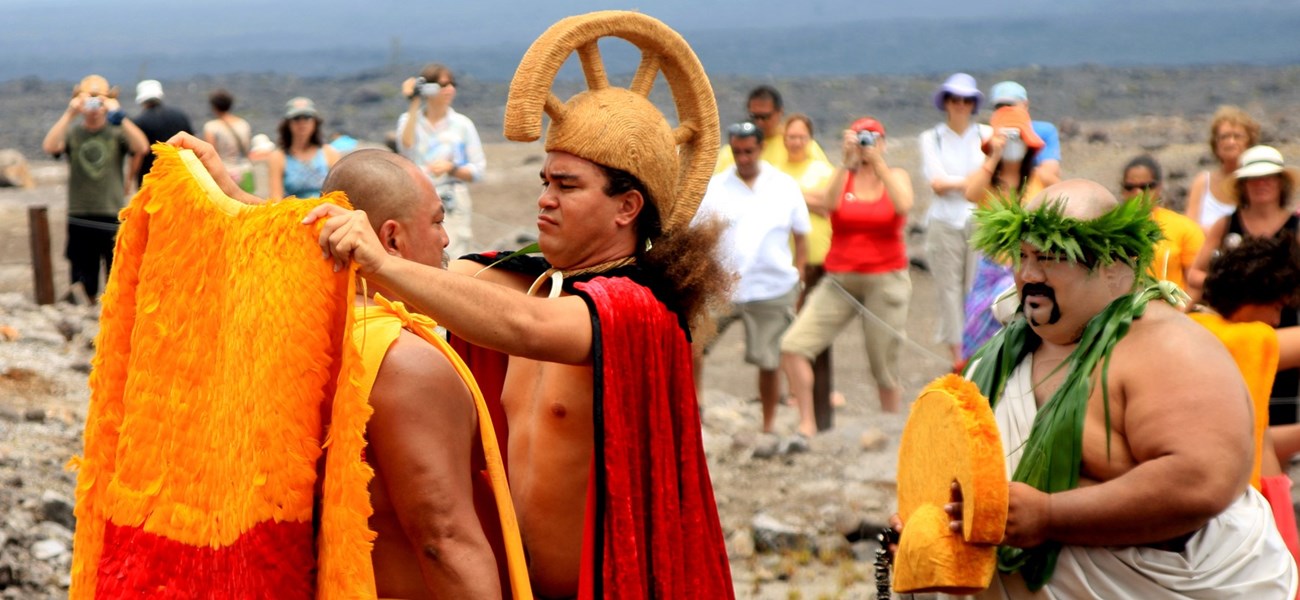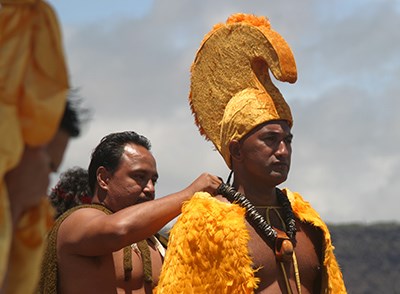
Centuries after the first Polynesian voyagers settled in Hawaiʻi, a new wave of Polynesians arrived. Known as the Kānaka Maoli, meaning “the people”, they brought along different ideas and concepts from their culture. The isolated feudalism that had existed previously in the islands was forced to change.

Their malo or loincloth would come from the finest kapa made from the bark of the wauke (Broussonetia papyrifera) plants. Lei niho palaoa, a lei of braided human hair and a whale-tooth pendant, adorned their neck. These were all symbols of royalty. They governed with authority derived from presumed mana, which is supernatural or divine power. With this mana, they had the divine birth right and authority to rule over others. Their mana was based on their parent’s lineage, or how superior their genealogy was compared to other chiefs. All chiefs, however, were believed to be direct links to the spirit world. Their kuleana, or roles and responsibilities, differed dependent on where they stood within the aliʻi ranks. Some were kahuna, or priests, while others were experts in a specific field. Some alʻi even served other, higher ranked aliʻi. The aliʻi nui, or highest chiefs were those whose pedigree was genuine - a line that offered a direct path to mana. This mana allowed them to govern the land and the people on those lands. A chief could become aliʻi nui in two different ways: one was to merely be born in the rank, while the other was to outsmart other chiefs during warfare or in negotiations. This aliʻi nui, reigned over a mokupuni, or island. This was then divided into a moku, or district. A chief called aliʻi ʻai moku governed each moku. Aliʻi ʻai moku then subdivided that moku into several ahupua’a, or districts. This chief was called aliʻi ʻai ahupuaʻa. Then a konohiki (headman of a land-division) supervised the people who lived in each ahupuaʻa. Sometimes the aliʻi ʻai ahupuaʻa or the konohiki were one in the same. They controlled the resources within the land and fishing rights. The aliʻi class played a vital role in Hawaiian culture. The amo (burden of responsibility) fell on their shoulders. By providing structure, direction, accountability and hope to so many, the aliʻi class lead Hawaiian society for centuries. |
Last updated: August 21, 2025
